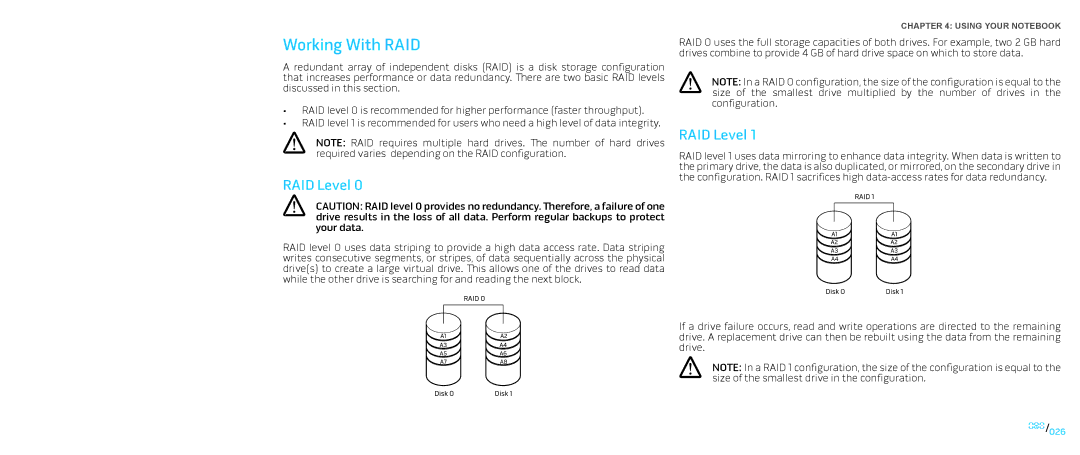
Working With RAID
A redundant array of independent disks (RAID) is a disk storage configuration that increases performance or data redundancy. There are two basic RAID levels discussed in this section.
•RAID level 0 is recommended for higher performance (faster throughput).
•RAID level 1 is recommended for users who need a high level of data integrity.
NOTE: RAID requires multiple hard drives. The number of hard drives required varies depending on the RAID configuration.
RAID Level 0
CAUTION: RAID level 0 provides no redundancy. Therefore, a failure of one drive results in the loss of all data. Perform regular backups to protect your data.
RAID level 0 uses data striping to provide a high data access rate. Data striping writes consecutive segments, or stripes, of data sequentially across the physical drive(s) to create a large virtual drive. This allows one of the drives to read data while the other drive is searching for and reading the next block.
CHAPTER 4: USING YOUR NOTEBOOK
RAID 0 uses the full storage capacities of both drives. For example, two 2 GB hard drives combine to provide 4 GB of hard drive space on which to store data.
NOTE: In a RAID 0 configuration, the size of the configuration is equal to the size of the smallest drive multiplied by the number of drives in the configuration.
RAID Level 1
RAID level 1 uses data mirroring to enhance data integrity. When data is written to the primary drive, the data is also duplicated, or mirrored, on the secondary drive in the configuration. RAID 1 sacrifices high
If a drive failure occurs, read and write operations are directed to the remaining drive. A replacement drive can then be rebuilt using the data from the remaining drive.
NOTE: In a RAID 1 configuration, the size of the configuration is equal to the size of the smallest drive in the configuration.
026/026
